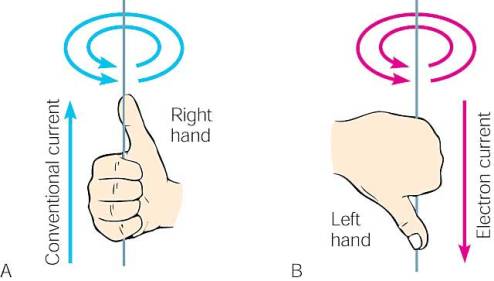
(Section 5.14)

Oersted discovered that a compass needle below a wire (A) pointed north when there was not a current, (B) moved at right angles when a current flowed one way, and (C) moved at right angles in the opposite direction when the current was reversed.
The Right Hand Rule:
What we can determine from this is that an electrical current produces a magnetic field . A magnetic field surrounds the wire as shown below

A magnetic compass shows the presence and direction
of the magnetic field around a straight length of current-carrying wire.
This effect can be summarized by the right hand rule. This rule states that if you put the thumb of your right hand in the direction of the current, the magnetic field will wrap around the wire the same way your fingers will.

Use (A) a right-hand rule of thumb to determine the direction of a magnetic field around a conventional current. Remember that most people write current going from positive to negative. If your stubbornness requires you to thing about electron flow, you will have to reverse everything and use the left-hand rule of thumb.